In most places, bears make their presence known with a grunt or a growl; in the forests around Japanese town Karuizawa, however, the only audible evidence of their existence is a series of beeps.
Holding a telemetry device beneath the crumpled Akaishi Mountains, wildlife researcher Tamatani Hiroo is tracking one of 30 collared Asian black bears being monitored in this area. “That’s Ikaru,” he says, pointing to swathes of forest so dense they roll like emerald waves. “She’s been moving around that area for the last few years.”
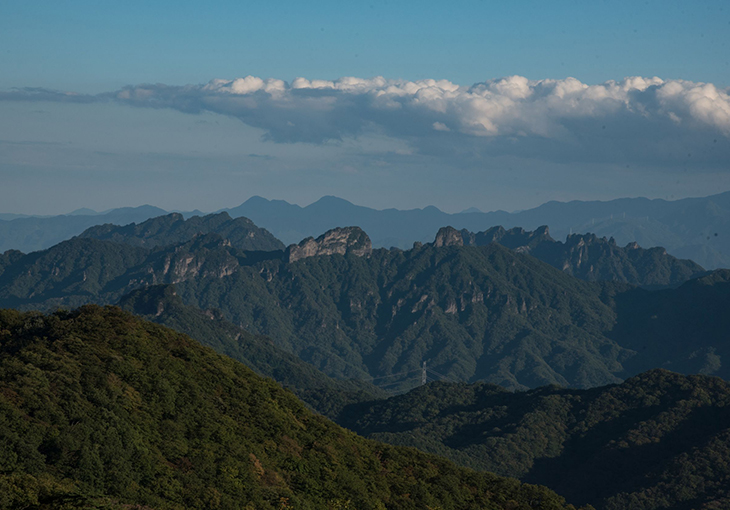
Mr Hiroo estimates that the 23-year-old female is only 100 metres away, yet we don’t even catch a glimpse of her fur. Although black bears shift regularly through these woodlands, which run uninterrupted for more than 200km from the neighbouring Niigata Prefecture, they’re rarely ever seen – and the Picchio Wildlife Research Centre would like to keep it that way.
Read more: Polar bears: up close and personal

A 60-minute bullet train ride from Tokyo, Karuizawa is a wealthy retreat town in the Japanese Alps; a cross between Wimbledon and the Hamptons, its pine and larch forests seclude Western-style villas and boulevards lined with patisseries and boutiques. The current emperor and empress once famously played a game of tennis in the town’s public court, and John Lennon spent time here with Yoko Ono in the 1970s.
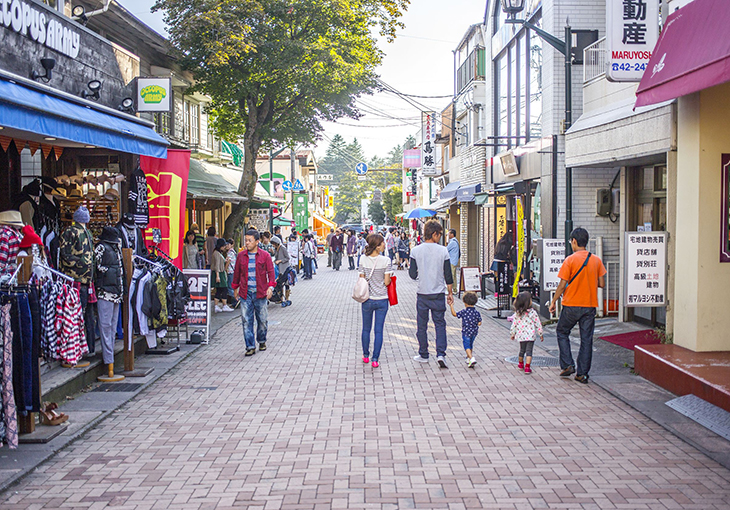
A former post station on the Nakasendo Highway, which connected Edo (modern-day Tokyo) with Kyoto from the 17th to mid-19th century, its lack of arable land (required to pay a rice tax to shogun military commanders) saw it fade out of favour. But in the 1800s, missionaries moved in, drawn by the cool mountain air and promise of endless sunny days in winter, giving the town a cosmopolitan character.
Read more: Japan’s bullet trains on a budget
Ornithologists were also attracted by the 80 species of bird found here, and in 1974, the Karuizawa Wild Birds Sanctuary became the first protected area of its kind in Japan.
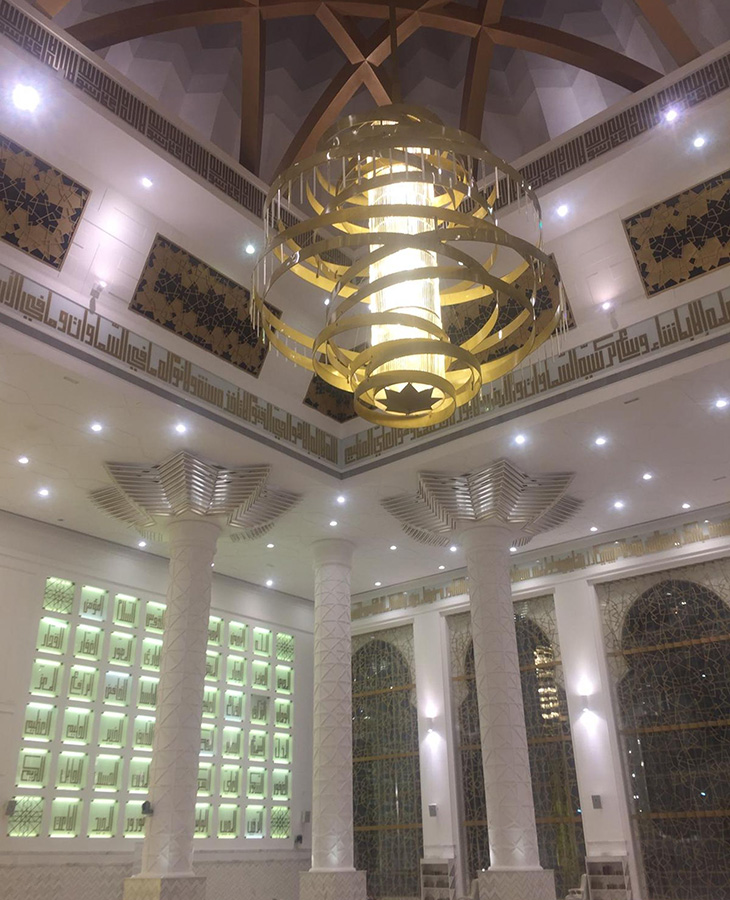
For many years, people were able to live in harmony with their environment. Yet increasing human encroachment has had an inevitable impact, and in a tussle for natural resources, wildlife has not fared well.
“Until the 1990s, we never had a bear problem,” explains Picchio’s marketing director, Masaya Kusube, whose own home sits in the bears’ leafy front room. But when a lodge naively allowed the animals to rummage through their rubbish bins – pleasing camera-ready guests in the process – the animals became at best a nuisance, at worst a threat. In 2000, more than 200 public bins were damaged by bears and some communities retaliated by forming vigilante groups.
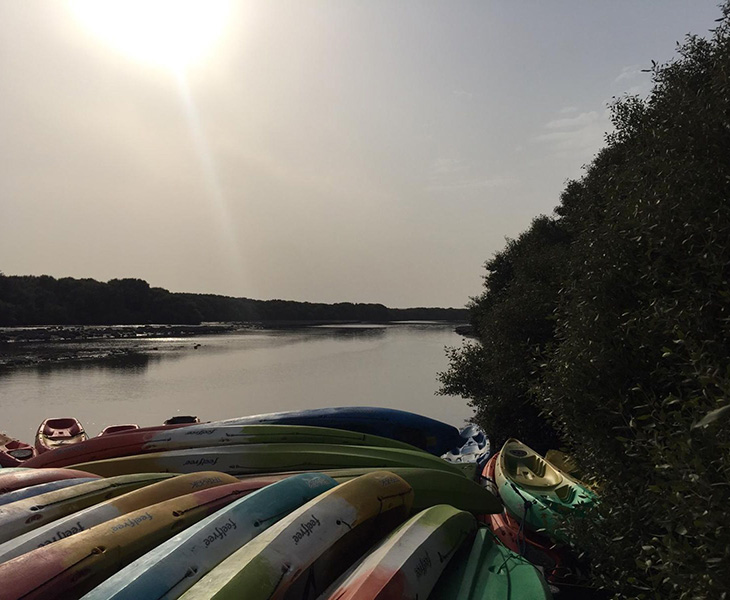
Established in 1992 as an outfit offering eco-tours, Picchio has, in recent years, turned its focus to managing issues of human wildlife conflict in Karuizawa – a pioneering conservation project in Japan.
Mr Kusube proudly shows me one of 40 new public bear-proof dustbins he’s helped engineer, along with several metal drum ‘traps’ used to safely capture the bears and transport them away from inhabited areas.
We end up at a kennel where Karelian bear dogs Elf and Rayla are being trained to ‘tree’ bears. Feeling the boisterous pups’ spittle-coated teeth gripping rather too playfully around my wrist, I even have the urge to shimmy up a trunk myself.
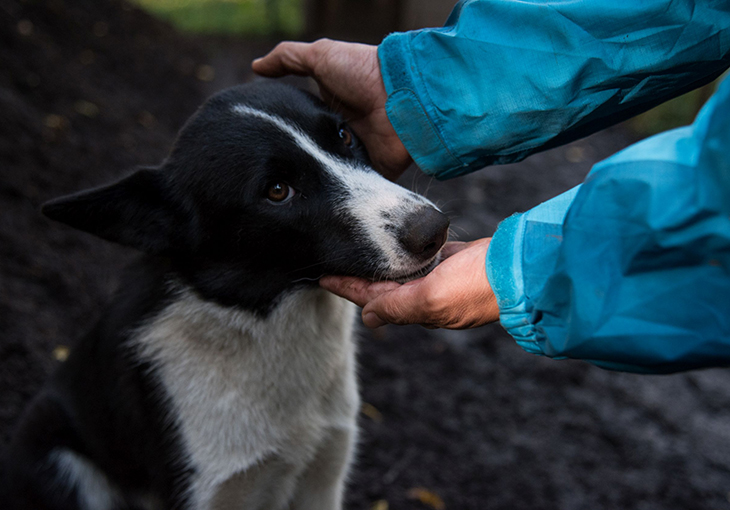
These encounters, along with Mr Hiroo’s telemetry tracking, are all part of a new tour Picchio is planning for tourists, offering an insight into their work and encouraging more Japanese people to fall in love with wildlife.
Ironically, Japan has a long-standing connection to nature; it’s the focus of the national religion, Shinto, with many deities symbolised by animals. But while hedgehog, cat and even lizard petting cafes have popped up in Tokyo, the idea of appreciating animals in the wild is still a fledgling concept.
“Perhaps because wild animals are natural, we don’t think they are so valuable,” muses Mr Kusube when I quiz him on the subject. Crucially, he believes the key to changing attitudes lies with Westerners, whose activities have set trends since Edo times.
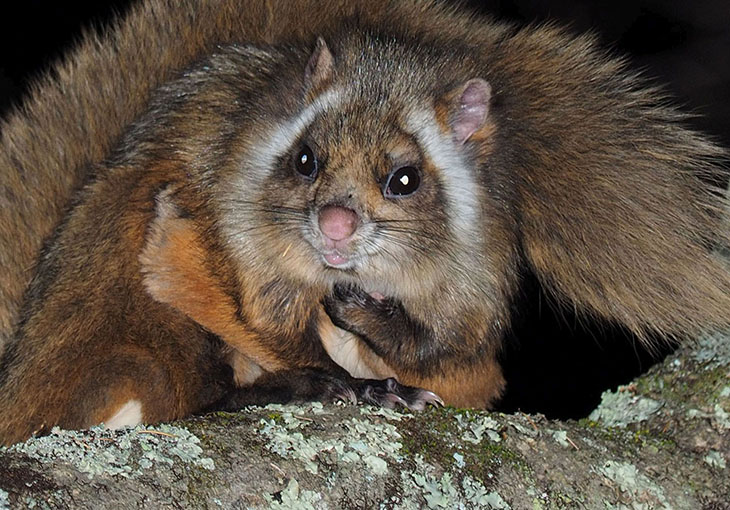
Later that evening, I join another tour organised by Picchio – watching flying squirrels, known as musasabi, make sunset glides from their nests.
We wait patiently underneath one of 12 nesting boxes for the spread-eagled creatures to appear and, as if on cue, they emerge 30 minutes after dusk, sailing down steep, forested slopes like enormous autumn leaves carried by the wind.
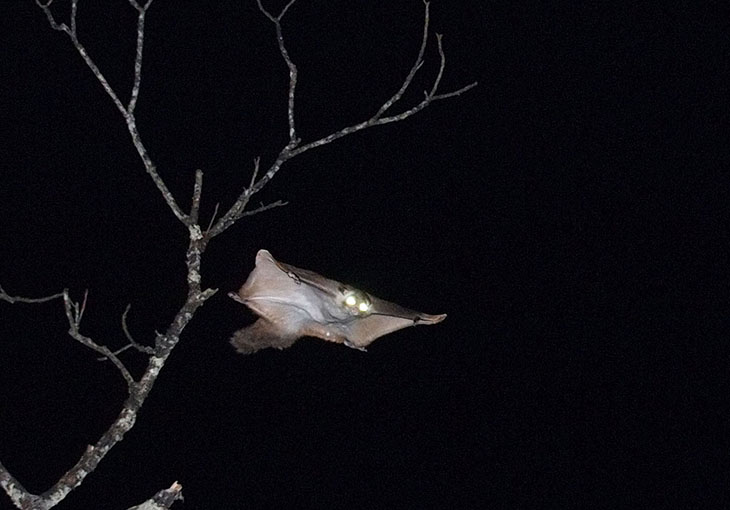
The encounter is quite literally fleeting, although harems of sika deer on a post-dinner night tour, are prepared to stick around.
Read more: Stunning images of Japan’s cherry blossoms
Climbing into torchlight-fitted 4x4s, we drive to the top of the seasonal Prince Snow Resort, strewn with dismantled restaurant signs and token mounds of fake snow. Perhaps more remarkable than the deer sightings is the city view; only a fraction of the area dances with lights, demonstrating just how wild and untouched most of Karuizawa remains.
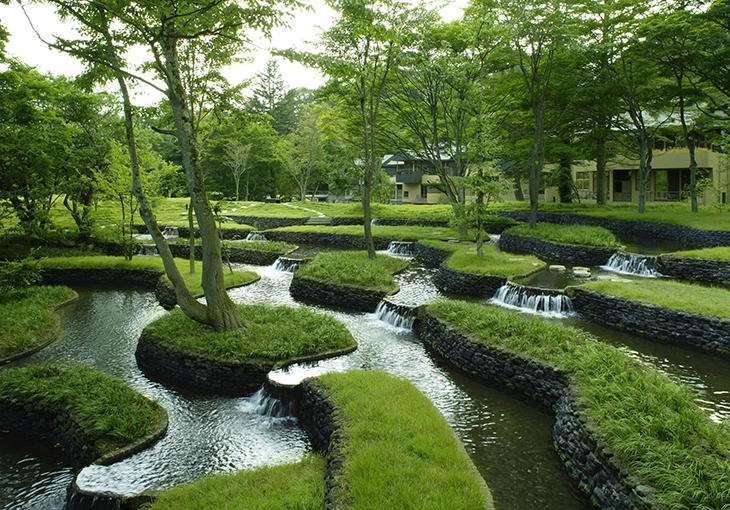
Living alongside nature is a key theme at the Hoshinoya Karuizawa Resort, a serene property neighbouring Picchio’s lakeside research centre, opened in 1914 at the foot of volcanic Mount Asama on the site of a hot spring. Winding around streams and connected by bridges, villas present a modern interpretation of traditional Japanese hospitality, with beds raised comfortably from the floor and a bath infused with seasonal fresh ginger and apples filled at the touch of a button.
Blazing crimson and gold, autumn colours sweep through the site, and scenes are reflected in dishes created by executive chef Eiji Inake at the Kasuke restaurant. Tucking into a tasting menu, craggy-edged and salmon-pink mushrooms are part of an eight-varietal steamed medley, and black throat sea perch is grilled on pine bark to give it a woody scent.

But the star attraction is the onsen – or hot spring – Tombo-no-yu. Hotel founder Kuniji Hoshino took a gamble on striking gold during prospective excavations for the therapeutic waters, but in an area broiling with volcanic activity, his chances were high.
Taking an onsen is a Japanese ritual; stripping off naked, visitors wash and relax in segregated baths. Sitting in the rotenburo (outdoor bath), I watch curled and crisped cedar leaves settle on the steaming granite rocks, creating a patchwork of semi-precious hues. It’s a popular public bathing site, but guests of Hoshinoya have exclusive early morning access.

For those who struggle with communal nudity, there’s a second onsite onsen, open all night, featuring a series of dimly lit and blacked-out 40 degrees C chambers designed for meditation. When I visit at 1am, only a few souls float like apparitions, disappearing into their own mysterious after-worlds.
Even in the concrete chaos of Tokyo, an onsen is a place for peace and reflection – proof there’s an opportunity to connect with nature, even when green spaces are few and far between.
The capital’s only true natural spring sits on the 17th floor of Hoshinoya’s sister property in the Otemachi financial district, and only hotel guests can enter. Inspired by traditional ryokan, rooms have tatami-mat floors and my suite is painted in ultramarine gunjo – one of the key shades used in ancient Japanese art.
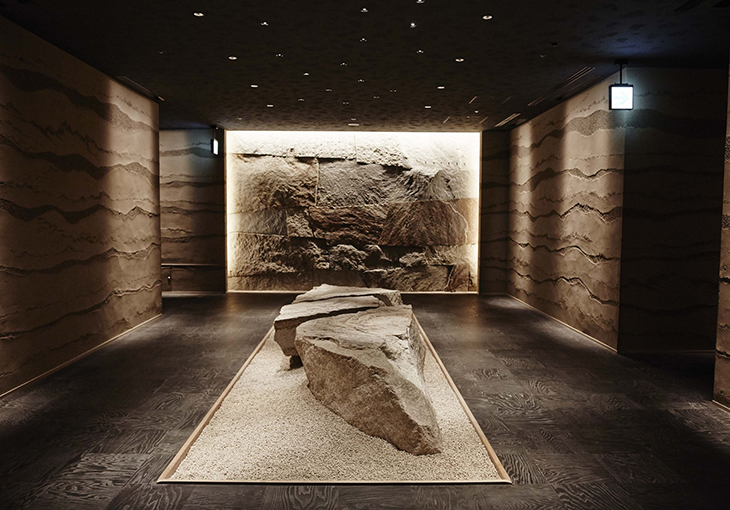
The owners dug down 1500 metres to find a hot spring source, and rocks raised from the construction now decorate a subterranean restaurant, Hamada, where executive chef Noriyuki Hamada uses “Nippon” ingredients with French cooking techniques, and fossilised wood from the pillars of the feudal mansion that once stood here, have been used to produce plates and bowls.
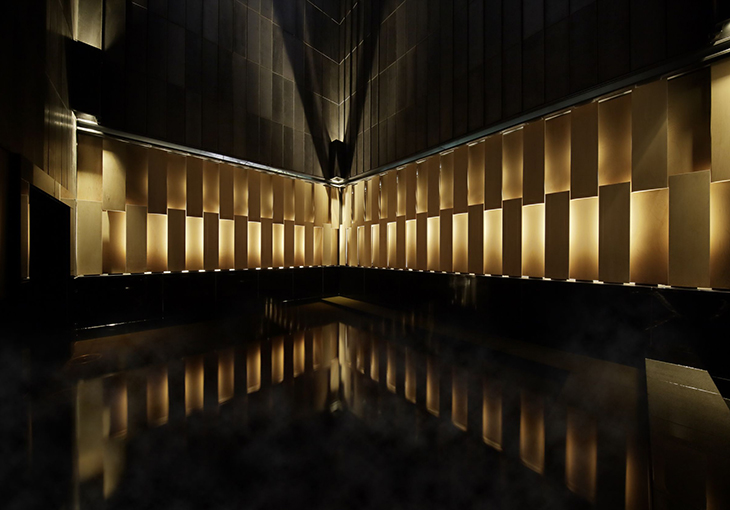
At 5am, I lie back in the onsen, gazing up at a patch of pre-dawn inky blue through the open roof. In that moment, with no points of reference, I could be anywhere; city, forest or mountaintop, we share the same sky. And as several swollen, heavy raindrops burst around me, nature makes her presence most clearly heard.
Have you visited Japan? Tell us you favourite thing about Japan in the comments section below.
-With PA
If you enjoy our content, don’t keep it to yourself. Share our free eNews with your friends and encourage them to sign up.

